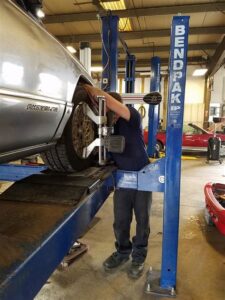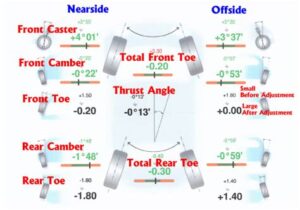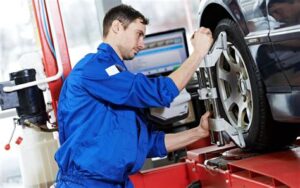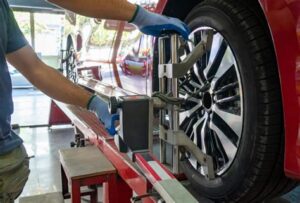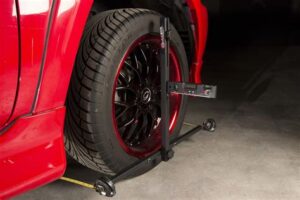Car Alignment Toe: Achieve Optimal Performance and Longevity for Your Vehicle
Proper vehicle maintenance is crucial for ensuring safety, performance, and longevity on the road, and one key aspect is car alignment, particularly toe adjustment. Toe alignment refers to the angle at which your tires point relative to the centerline of your vehicle, affecting handling, tire wear, and overall driving experience. In this article, we will explore the importance of toe adjustment, common signs indicating your car may need realignment, and how to measure it for optimal performance. Additionally, we’ll discuss the impact of proper toe alignment on tire life and provide invaluable tips for maintaining correct settings. Whether you’re a seasoned driver or just starting your journey, understanding toe alignment can lead to smoother rides and improved vehicle health. Let’s dive into the essential aspects of car alignment toe and why it matters for every road user.
Understanding Car Alignment: The Role Of Toe Adjustment
Car alignment encompasses several key adjustments that ensure your vehicle handles properly and wears tires evenly. Among these, toe adjustment plays a critical role in determining how your vehicle navigates on the road. Toe alignment refers to the angle at which the tires point in relation to the centerline of the vehicle, and it can significantly affect your car’s overall performance.
When the front of the tires points inward, it is known as toe-in; conversely, when they point outward, it is referred to as toe-out. Both conditions can lead to various driving issues. For instance, excessive toe-in can cause premature tire wear on the inner edges, while toe-out can lead to outer edge wear. Additionally, incorrect toe settings can adversely affect steering response, leading to poor handling and potential instability during driving.
Adjusting car alignment for proper toe settings can enhance driving safety, increase fuel efficiency, and prolong tire life. Regular checks are beneficial, especially after significant impacts like hitting a curb or pothole, or if you start noticing irregular tire wear patterns.
Maintaining correct toe alignment is essential for ensuring that your vehicle operates optimally. Neglecting this aspect of car alignment can lead to costly repairs down the line, affecting not just tire life, but overall vehicle performance and safety.
Common Signs Your Car Needs Toe Alignment Correction
Proper car alignment is crucial for vehicle performance and safety. One of the key adjustments in car alignment is the toe setting. Here are some common signs that indicate your car may need toe alignment correction:
- Uneven Tire Wear: If you notice that the inside or outside edges of your tires are wearing out faster than the center, it may be a sign of incorrect toe alignment.
- Pulling to One Side: A vehicle that pulls to the left or right while driving straight can indicate an issue with toe alignment.
- Steering Wheel Off-Center: If your steering wheel is not centered when driving straight, this could suggest a misalignment in the toe setting.
- Vibration in the Steering Wheel: Excessive vibration can be a symptom of poor alignment, particularly if it occurs at higher speeds.
- Difficulty Steering: If you find it harder to steer in either direction, toe misalignment could be the culprit.
If you experience any of these symptoms, it is vital to have your car alignment checked as soon as possible to prevent further damage to your tires and improve your overall driving experience.
| Sign | Possible Cause | Recommended Action |
|---|---|---|
| Uneven Tire Wear | Poor toe alignment | Get a toe alignment check |
| Pulling to One Side | Misalignment | Visit a professional for adjustment |
| Steering Wheel Off-Center | Faulty toe setting | Adjust toe alignment |
| Vibration in Steering Wheel | Alignment issues | Check alignment immediately |
| Difficulty Steering | Misaligned suspension components | Consult an expert |
How To Measure Toe Alignment For Optimal Performance
Measuring car alignment, particularly toe alignment, is essential to ensure optimal vehicle performance. Proper toe settings can improve handling and tire longevity, so knowing how to measure them accurately is critical for any vehicle owner. Here’s a simple method to measure toe alignment:
- Gather Your Tools: You will need a tape measure, a level (preferably digital), and a flat surface. If available, a specific toe alignment tool can provide even more precise measurements.
- Prepare The Vehicle: Ensure your vehicle is on a level surface with the tires properly inflated. Turn the steering wheel to ensure it is straight and then secure it in place.
- Measure The Front And Rear Width: Measure the distance between the inner edges of the front tires (front width) and repeat the measurement at the rear tires (rear width). Make sure to take the measurement at the same height on the tires to avoid discrepancies.
- Calculate Toe: Use the formula:
Toe = (Front Width – Rear Width) / Front Width × 100.
A positive value indicates toe-in, while a negative value indicates toe-out. - Check Manufacturer Specifications: Always compare your measurements against the vehicle manufacturer’s specifications for proper toe settings. This information can typically be found in the owner’s manual or a reputable online resource.
- Adjust Accordingly: If the toe alignment is not within the recommended range, adjustments will need to be made. This often requires professional help to ensure accurate alignment.
By regularly measuring and ensuring the correct toe alignment, you can enhance the overall performance of your car alignment system and extend the life of your tires.
The Impact Of Proper Toe Alignment On Tire Life
Maintaining accurate car alignment is crucial for the longevity of your tires. The toe setting, which refers to the angle at which your tires point in relation to the centerline of the vehicle, plays a significant role in tire wear. If your toe alignment is off, it can lead to uneven tire wear patterns, ultimately shortening the lifespan of your tires.
Here are some key points on how proper toe alignment impacts tire life:
| Tire Wear Pattern | Impact of Incorrect Toe Alignment |
|---|---|
| Inside Wear | Excessive toe-in can cause the inner edges of the tires to wear out prematurely. |
| Outside Wear | Excessive toe-out can lead to accelerated wear on the outer edges of the tires. |
| Center Wear | Incorrect alignment can sometimes lead to wear in the center of the tire, indicative of excessive inflation pressure or misalignment. |
Properly aligned car alignment ensures even weight distribution among the tires, promoting uniform wear and maximizing their usability on the road. Regular checks and adjustments of your toe alignment can save you money in the long run by extending tire life and improving fuel efficiency.
Addressing your toe alignment is an essential part of maintaining your vehicle, as it directly impacts tire longevity and vehicle performance.
Tips For Maintaining Correct Car Alignment Toe Settings
Maintaining correct car alignment toe settings is crucial for ensuring optimal vehicle performance and tire longevity. Here are some practical tips to help you keep your alignment in check:
- Regular Inspections: Schedule periodic alignments to catch any issues early. Checking your car alignment every 6,000 miles or at least once a year can prevent significant problems.
- Monitor Tire Wear: Keep an eye on your tire tread. Uneven wear may indicate an alignment issue, including incorrect toe settings.
- Avoid Potholes: Roads with potholes and rough surfaces can throw off your car’s alignment. Try to avoid these hazards whenever possible.
- Check Suspension Components: Ensure that suspension parts, such as tie rods and bushings, are in good condition. Worn components can lead to misalignment due to increased movement and instability.
- Consider Load Changes: Be mindful of how changes in your vehicle’s load can affect alignment. Extra weight or unevenly distributed cargo can disrupt your car alignment settings.
- Use Quality Tires: Invest in high-quality tires that will provide better stability and less wear on your vehicle, helping maintain proper car alignment over time.
- Professional Alignment Services: Always rely on experienced technicians who can accurately adjust your car alignment toe settings. Advanced alignment machines ensure precision adjustments.
By following these tips, you can help maintain the correct car alignment toe settings and ensure a smoother, safer, and more efficient driving experience.
Frequently Asked Questions
What is car alignment toe?
Car alignment toe refers to the angle of the wheels in relation to the centerline of the vehicle. Proper toe alignment ensures that the wheels are pointing in the right direction, providing better handling and tire wear.
Why is toe alignment important for my vehicle?
Toe alignment is crucial for the overall handling and performance of your vehicle. Incorrect toe settings can lead to uneven tire wear, decreased fuel efficiency, and compromised safety.
How can I tell if my car’s toe alignment is off?
Common signs of misalignment include uneven tire wear, the steering wheel being off-center, pulling to one side, or experiencing vibrations while driving.
What causes toe misalignment in cars?
Toe misalignment can be caused by various factors such as hitting potholes, curbs, or other road debris, as well as normal wear and tear on suspension components over time.
How often should I check my car’s toe alignment?
It is recommended to check your car’s alignment at least once a year, or every 6,000 miles, and after any significant impact such as a collision or hitting a large pothole.
Can I fix toe alignment myself?
While some vehicle owners may attempt to perform toe adjustments themselves, it’s best left to professionals equipped with the proper tools and technology to ensure accurate alignment.
What are the possible consequences of ignoring toe alignment issues?
Ignoring toe alignment issues can lead to severe problems such as increased tire wear, reduced fuel efficiency, compromised vehicle handling, and ultimately, potential safety hazards on the road.

